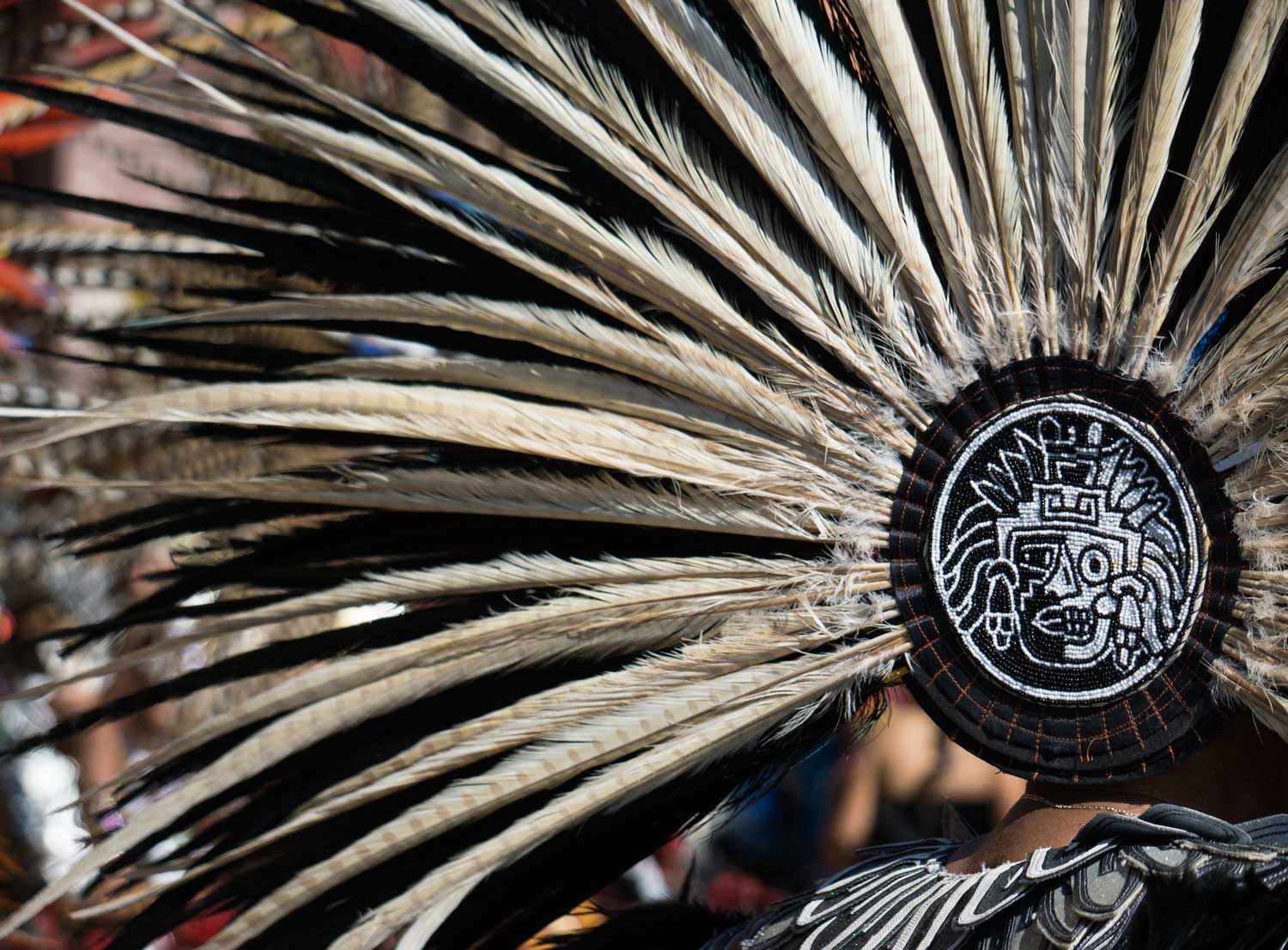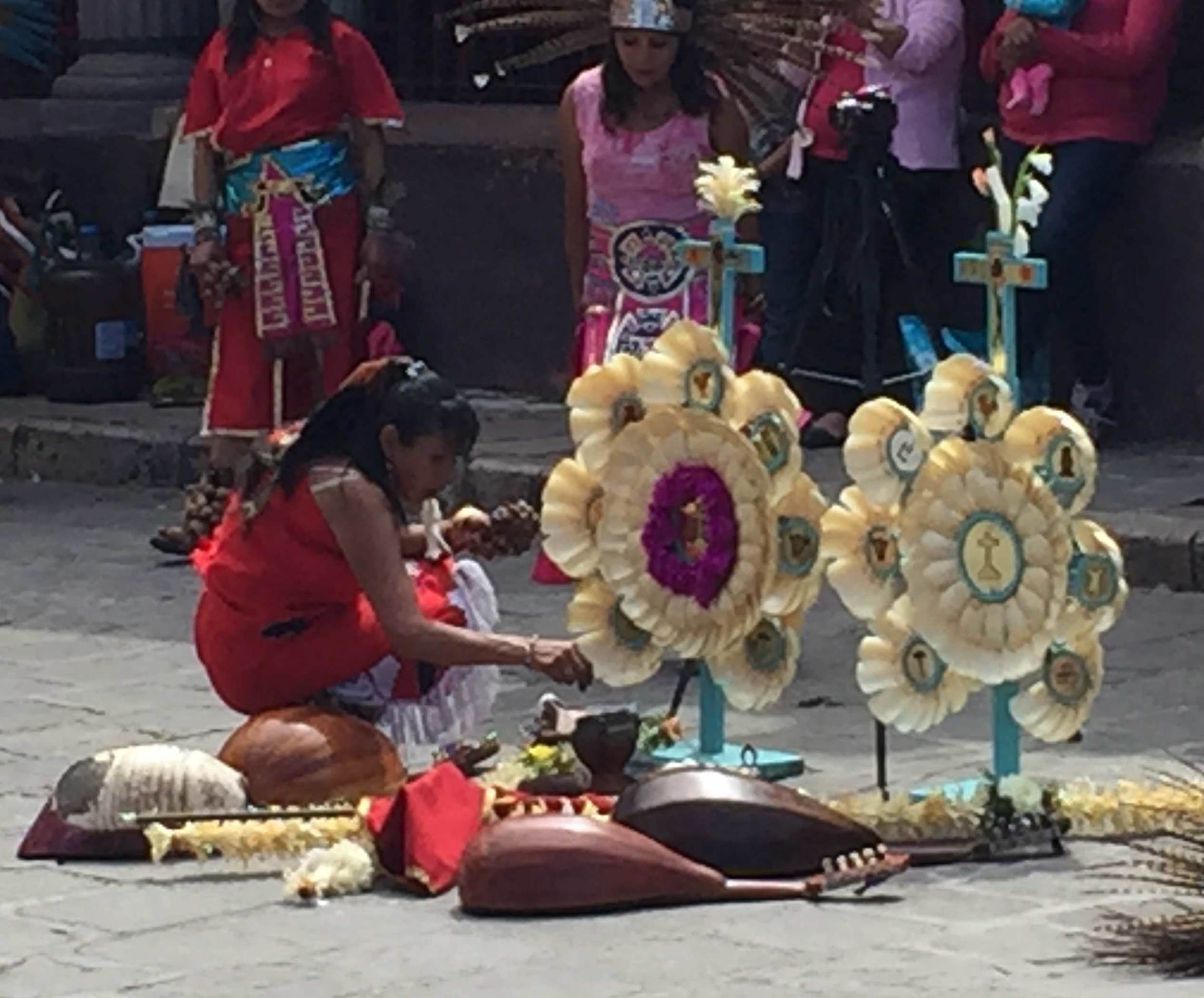Celebrating el Señor de la Conquista



A few years ago, when I first saw Azteca dances all with intense drumming in the Jardin, or main square bordered by the Parroquia, a Parrish church in San Miguel de Allende, Mexico, I was back in the Southwest. Looming above the twisting, twirling and leaping was the emblematic Parroquia. The bright and elaborate costumes consisting of headdresses with feathers of every color of the rainbow, the beaded gowns, and and gourd-like rattles adorning legs and ankles, also took me back to another, Pre-Columbian era. Here, the indigenous Otomi and Chichimeca cultures seemed alive and well in all their glory and fanfare.
Fascinating from an anthropological perspective is how such celebratory rituals remain so deeply interwoven with the Catholic religion. A paradox. The Chichimeca had resisted fiercely. And while they were subjected by Franciscan and later Dominicans monks, like many other of the indigenous cultures in Mexico they retained much of their pre-Hispanic and pagan identity. In addition, unlike their neighbors to the North, New Spain was more adept at integrating these two worlds. Think of the Lady of Guadelupe once referred to as Tonantzin, the Mother Goddess before the conquest. In her new incarnation she is still featured more prominently in churches than a cross of Jesus.
But back to today: the dancers or "Concheros" consist of men, women and even children visiting from neighboring towns on a specific day in March. (Actually in writing this the next day it seems to persist through the weekend). The dances and loud drumming also continue through the night. And, as things grow more intense, some, particularly young men, enter into a trance-like state. (But if you're not dancing, you can also enter the Parroquia and recite 33 prayers, one for each day of Christ's life.) You might also catch a glimpse of small offerings such as simple painted turquoise crosses above corn husk flowers or a larger statue of Christ made of corn husks and orchid bulbs. Below is a young woman tending to the copal incense.
Below we have scenes where people need to pause and take a drink, check their cell phones, readjust their costumes or sell beads to tourists...





For those interested in learning more about this fascinating festival, check out: http://www.mexconnect.com/articles/4225-our-lord-of-the-conquest-festival-in-san-miguel-de-allende



